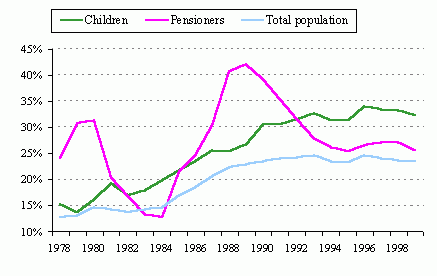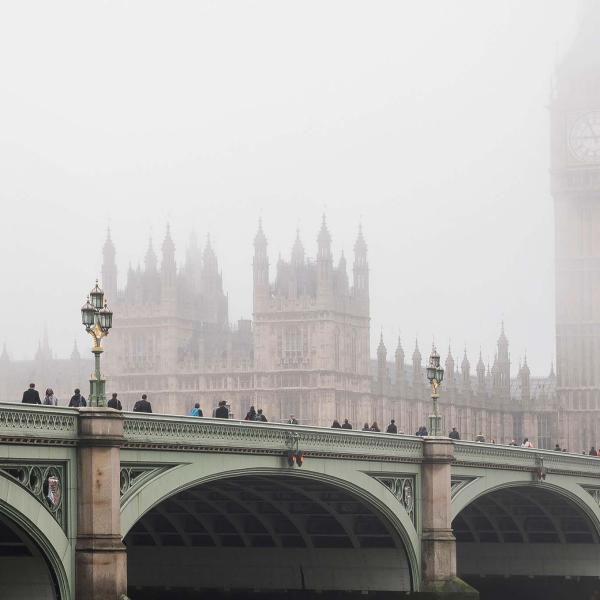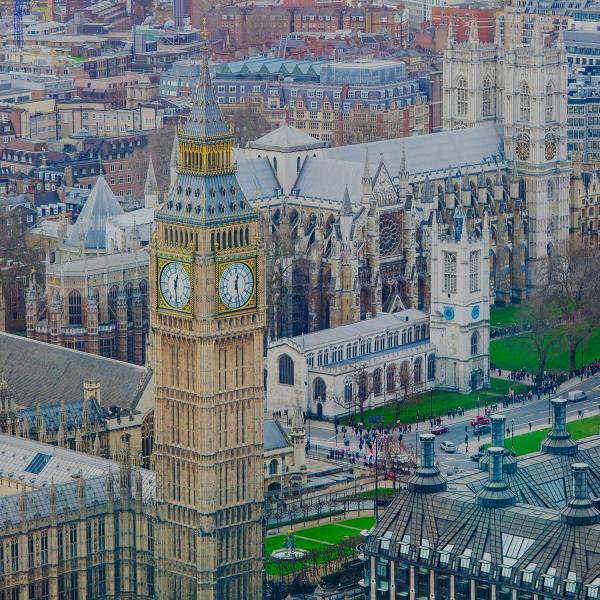Today, 13th July 2001, the Government publishes a report on low income households. The report shows the number of people, including children and pensioners, in poverty up to April 2000. IFS has used the information underlying the official report to undertake a study of the overall income distribution, also published today.
What has happened to child poverty?
The Government report shows:
- In the year up to April 2000, 1 in 3 children (4.1 million children) lived below the government's headline poverty measure.
- This number has fallen by 300,000 (6%) since Labour took power in 1997.
The Government has said that tax and benefit reforms announced in the last Parliament will lift 1.2 million children out of relative poverty. This is a bigger drop than the figures up to April 2000 show. This is because:
- Today's figures tell us about poverty as it stood over a year ago. More children may have been lifted from poverty since then.
- Child poverty is a moving target ֠it is measured relative to average incomes across the whole population. Overall income rises since 1997, which have been particularly large for the better-off, have raised the poverty line. This means that many of those poorer families whose benefits the government has increased remain in poverty even though their incomes have gone up.
Figure 1. Proportion of children, pensioners and all people in poverty

Pensioner poverty
- 1 in 4 pensioners lived in poverty in the year up to April 2000 (2.4 million pensioners), using the government's headline poverty measure.
- This number has fallen by 100,000 (4%) since Labour took power in 1997.
What has happened to income inequality?
Today, 13 th July 2001, IFS publishes a new Briefing Note explaining the trends behind some of the latest figures. It shows that:
- Income inequality went up in the first two years of the last parliament before falling in 1999-2000.
- Inequality remained higher in the year to April 2000 than it was before Labour came to power, and higher than its previous peak at the start of the 1990s.
| Ends |
Notes to editors
- Today, Friday 13th July, IFS publishes Briefing Note No. 19, Inequality and Living Standards in Great Britain: Some Facts, by Alissa Goodman. The note is available to download free of charge.
- The Department for Work and Pensions today publishes Households Below Average Income, 1994/95 - 1999/00, Corporate Document Services, Leeds. It can be downloaded from the Department's website.
- The Government's headline poverty measure is 60 per cent of median income.
- The Government set out the number of children to be lifted out of poverty as a result of its tax and benefit reforms in HM Treasury, Economic and Fiscal Strategy Report, March 2001, Hc279, The Stationery Office, London, 2001.









